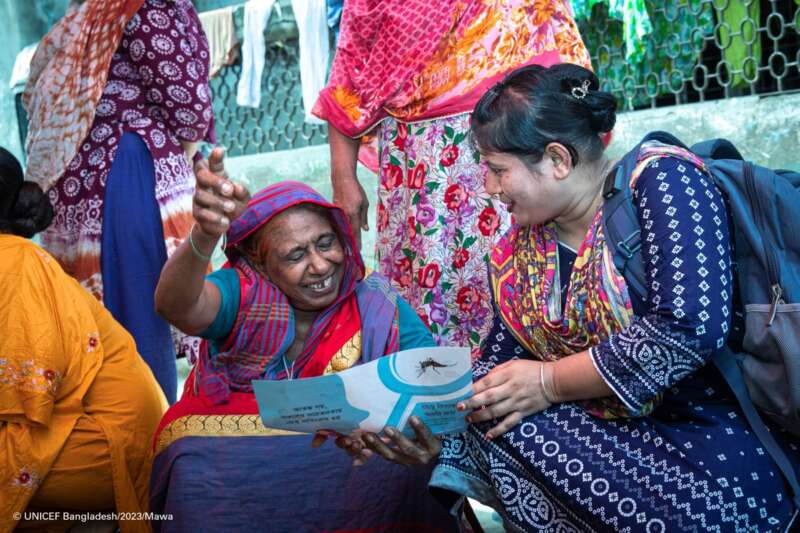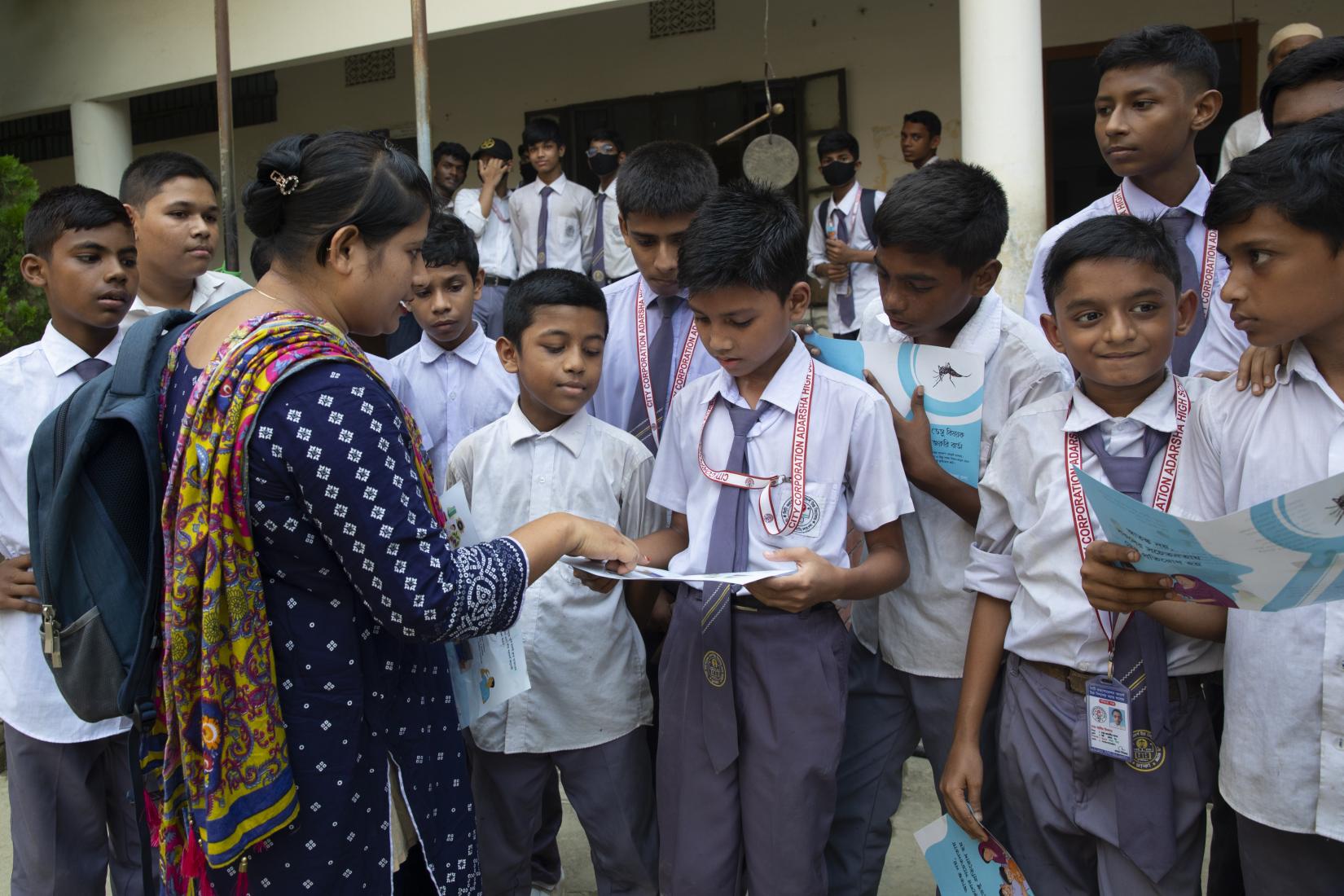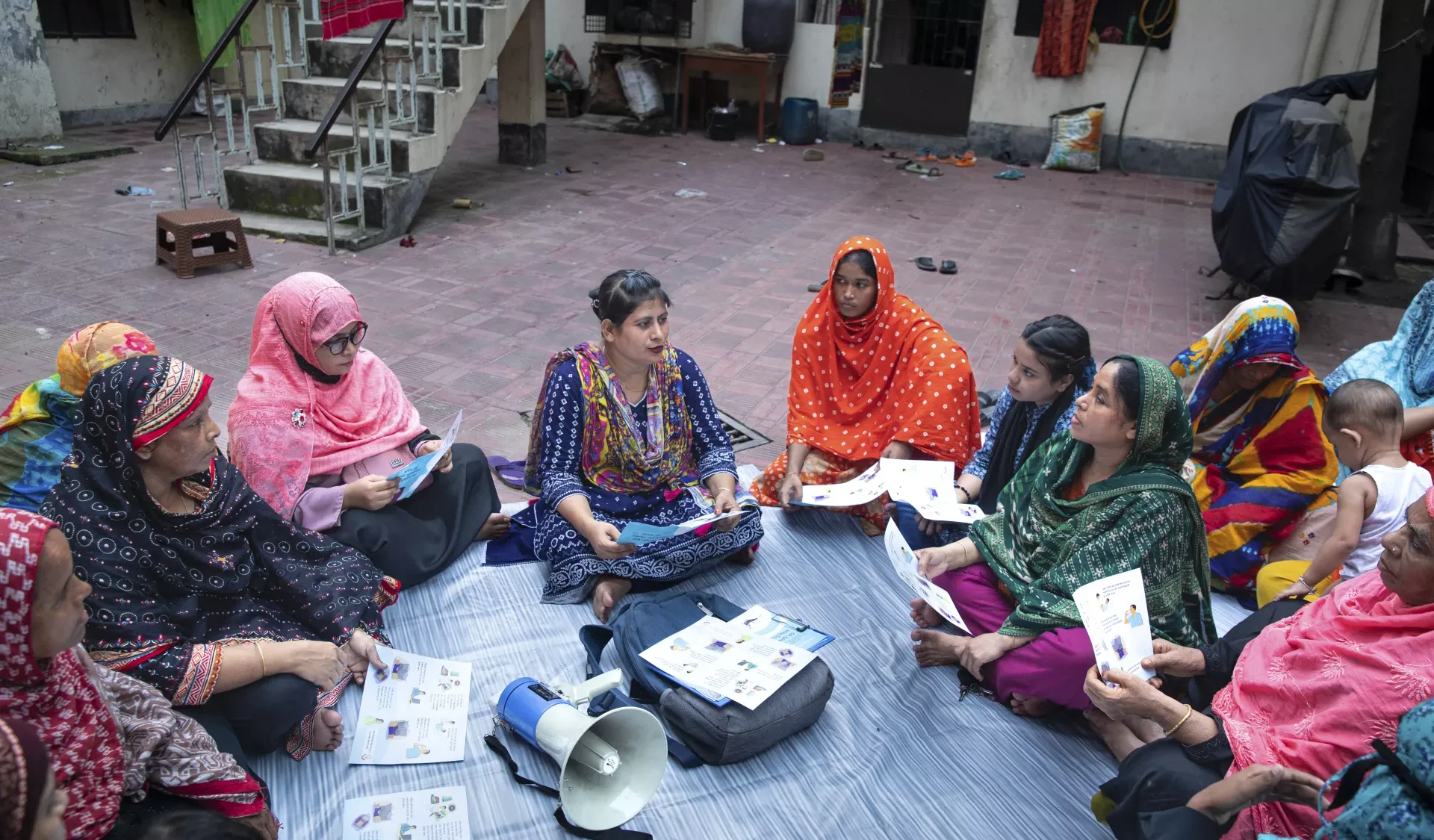Shiuly Khatun is a Field Supervisor at the Dhalpur Aalo Clinic in Dhaka, Bangladesh, where she manages and coordinates the clinic’s operations. Her daily responsibilities are vast and critical, ranging from mapping areas and dividing work for community volunteers to conducting health sessions and overseeing satellite clinic activities.

Shiuly has spent a large portion of her career out in the local communities addressing ongoing public health challenges posed by the dengue outbreak in Dhaka. Despite her incredibly hectic schedule, Shiuly took the time to discuss her work and the profound impact dengue is having on local communities.
During the interview, Shiuly addressed common misconceptions about dengue, her motivation for continuing work in public health despite the everyday challenges, and shared some success stories from her efforts.
The Interview
Q: How has the dengue outbreak in Dhaka impacted the communities you work with?
Shiuly: “Dhalpur is densely populated and prone to waterlogging. Even a little rain causes water to accumulate in various places. As a result, these areas with stagnant water see an increase in the spread of Aedes mosquitoes, leading to specific groups, especially children, pregnant women, and the elderly, being easily affected by dengue.
The rise in dengue has decreased the income of ordinary people. Many people have spent their savings to cover medical expenses and have become indebted.
Those who had dengue also experienced other problems such as pain in various parts of the body, rashes, mouth sores, fluid in the lungs, peeling skin, bleeding gums, low blood pressure, diarrhea, constipation, excessive vomiting, and high fever causing some to lose consciousness.
Children have been unable to attend school regularly due to illness. The local population did not seek proper treatment for fever, cold, and cough due to financial difficulties. The deaths of several people from dengue have instilled fear and anxiety, preventing people from going out to work.”

Q: What specific strategies and methods do you and your team use to spread awareness about dengue prevention?
Shiuly: “First, the ward commissioner is contacted to raise awareness. Areas with a lot of garbage and stagnant water are identified. With the commissioner’s permission, a 23-member mosquito control committee is formed. Several sub-committees are established in the community for public engagement, ensuring the work continues even in our absence.
We then coordinate with mosquito supervisors and start work with approval from the regional executive officer at the zone office. Together we work on spraying in the morning and fogging in the afternoon. We also organize discussions on dengue awareness and go house to house, and distribute leaflets, and organize awareness raising rallies.
With UNICEF’s support, we were able to enhance our efforts significantly. UNICEF provided leaflets, messages for dissemination through miking, and audio messages that were played on loudspeakers. These resources greatly amplified our reach and impact.
We make the dengue-related announcements via loudspeakers while walking through the area. The leaflets are posted in shops, on various walls along the road, and on electric poles. The dengue awareness audio messages are broadcasted on loudspeakers at several mosques. Discussions and prayers for dengue awareness are held in mosques on Fridays, reaching altogether 25 religious leaders through these discussions and community engagement sessions.
Cleanliness drives are conducted house to house. We ensure no water accumulates in flowerpots, coconut shells, disposable cups, empty bottles, milk cans, polythene, and car tires and spray bleaching powder.
We conduct meetings with house owners to make them aware so they can inform their tenants.
We also inform people about using mosquito nets day and night, conduct sessions with adolescents in schools, group sessions are held in the community.
We also have discussions with stakeholders and coordinate with other NGOs to raise dengue awareness.”
Q: What are the most common misconceptions or lack of knowledge you encounter regarding dengue prevention among the community members?
Shiuly: “The most common misconception or lack of knowledge about dengue prevention in the community was that they considered it to be just a regular fever and did not seek medical treatment. They believed that mosquitoes do not breed in clean water, only in dirty water.
They thought mosquitoes only bite at night and not during the day and bite below the knees and not on other parts of the body.
They also thought mosquitoes could not reach upper floors. Many tried to prevent dengue through spiritual healing practices. They believed that dengue mosquitoes only bite wealthy people, not the poor. Many considered the dengue outbreak to be a punishment from God.”
Q: What motivates you to continue your work in public health, especially in the face of challenging outbreaks like dengue?
Shiuly: “Working under challenging conditions benefits the community. My work helps increase their awareness, reduces their illnesses, and helps protects them from dengue because they listen to me, seek my advice, and respect me.
Additionally, working with the community has greatly inspired me. I have been able to provide advice and support during their difficult times and bring them to the clinic for services. The local ward commissioner responds to my work, values its importance, and promptly orders mosquito control workers to assist me. Government officials and personnel from various NGOs have supported and encouraged my work.
When I talk about diet and habits, many people listen and follow the guidelines accordingly. Additionally, community volunteers work with me every day to raise awareness about dengue, collaborating with me closely. This inspires me in my work.”
Q: Can you share any success stories or positive outcomes that have resulted from your team’s efforts in the community?
Shiuly: “Our Dhalpur area in Jatrabari was designated as a red zone. Due to our awareness campaigns and regular work with mosquito control workers, the incidence of dengue significantly decreased.
In this area, there was a dengue patient who was been severely ill for more than three days. When we visited that area and learned about the patient, we went to see him. Seeing that his condition was not improving, we quickly sent him to our clinic for primary healthcare. He consulted with a doctor, followed the doctor’s advice for treatment, and has gradually recovered.”
Q: What advice would you give to other public health workers in similar situations, both in Bangladesh and globally?
Shiuly: “Working alone with the community is not enough, we need to work in an integrated manner and build good relationships to ensure accurate information is shared. People should listen to and trust community leaders like me.
Additionally, establishing relationships with the government, NGOs, and hospitals is essential so that they can take necessary actions for dengue control whenever needed.”
*All images are © UNICEF Bangladesh/2023/Mawa, unless otherwise stated.
Disclaimer: The views and opinions expressed in this interview are those of the interviewees and do not necessarily reflect the views or positions of Public Health Landscape or Valent BioSciences, LLC.
